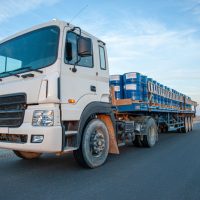Commercial Vehicle Collisions and City Port Activity

Cities located near ports often see increased truck and commercial vehicle traffic. Vancouver’s active port has recently had a surge in shipping volume. These trucks often clog local roads and freeways, which may lead to greater risk of collisions and putting motorists and their passengers in danger.
Vancouver Port Volume Leads to Increased Truck Traffic
In 2024, the port of Vancouver, Washington enjoyed a near record-breaking year. Export volume of farm commodities surged, while imports also spiked significantly. The number of trucks associated with the port activity has managed to overwhelm the local roadways. The result is that drivers and their passengers who are on nearby roads face an increased risk of traffic-related collisions.
In the past, the Port of Vancouver conducted a study to learn which roads were most heavily used by trucks coming to and from the port. The study revealed that I-5 bears much of the brunt of port-related traffic, as trucks use the freeway to come in and out of Vancouver. The two most significant local routes that trucks use are Mill Plain and 4th Plane. Truck drivers use these roads to get between the port and I-5. Another study showed that there are over 2,600 trucks each day that enter or exit the port. This volume begins to spike at 6:00 a.m. and it remains elevated until roughly 12:00 p.m.
Dangers Posed By Trucks Navigating to and From the Port of Vancouver
The presence of large commercial vehicles and trucks in the city can make roadway and traffic conditions more hazardous. There are numerous dangers associated with these vehicles. These hazards can increase exponentially when other factors are at play, such as strict delivery/loading schedules of the port.
Some of the dangers posed by truck drivers using the port include:
- Fatigue: truck drivers may be fatigued, especially when they are accessing the port early in the morning
- Distraction: truck drivers could be distracted, both because of the high level of activity at the port, and their potential need to focus on other tasks when they are behind the wheel
- Schedules: operators are under pressure to reach the port in time for unloading and to remain on schedule when they are making deliveries
- Mobility: trucks may need to make wide turns on local roads when they are accessing or leaving from the port
- Load Security: cargo may not be properly loaded onto trucks, causing it to either fly off or the vehicle to roll over entirely
- Road Maintenance: the roads surrounding the port may not be properly maintained and able to keep up with heavy volume from large trucks, causing dangerous environmental conditions
What to do After a Truck or Commercial Vehicle Collision
Collisions involving trucks and commercial vehicles can have serious consequences and often result in more extensive damage and injuries. If you have been involved in a collision with a truck or commercial vehicle, the process thereafter can be overwhelming and confusing. The experienced attorneys at Schauermann Thayer can help you understand your options and walk you through the legal process. You can schedule a free initial consultation with a truck accident lawyer at Schauermann Thayer by sending us a message online or by calling us today at 360-695-4244.
